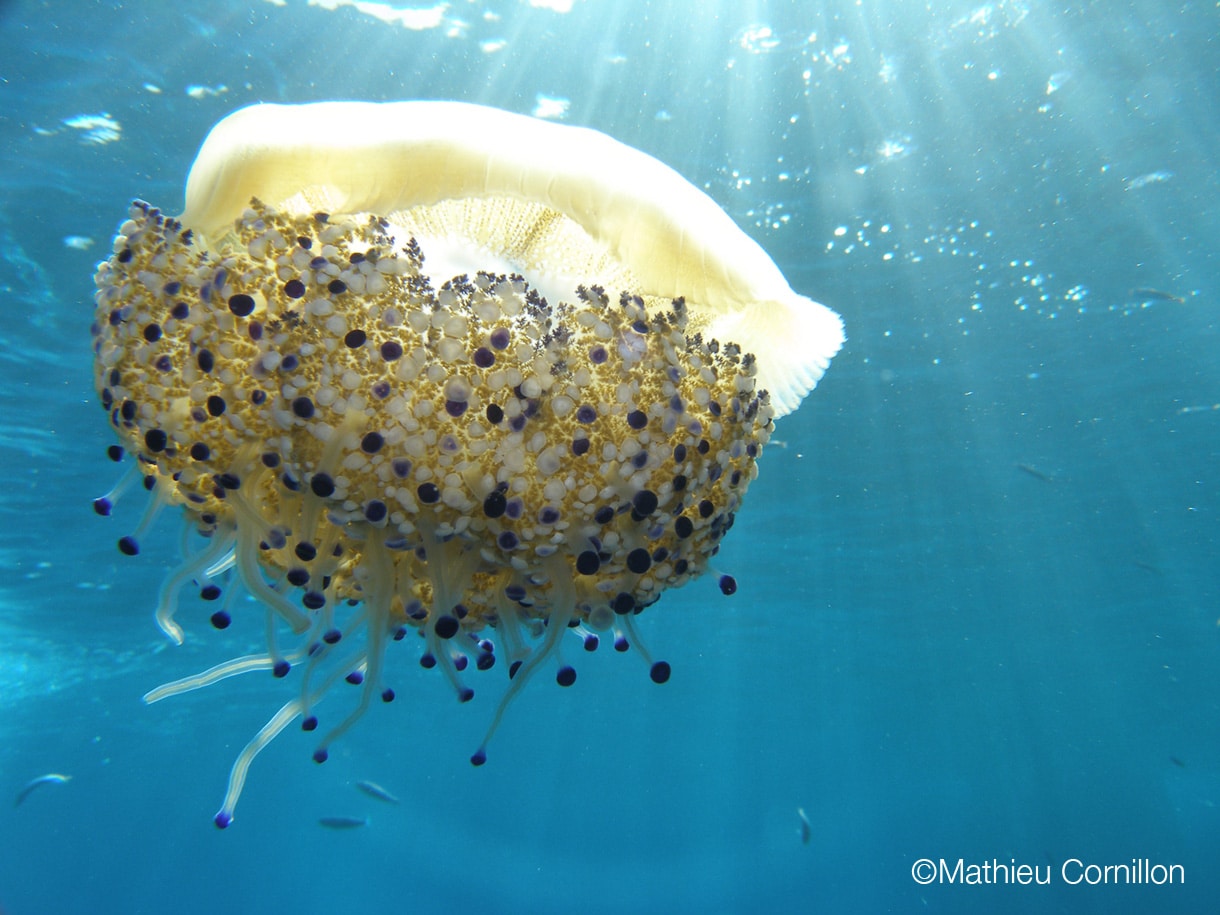Joomeo:
Hello Mathieu! We recently discovered your underwater photos and asked you to introduce us to this specialty, which is as poetic as it is technical. Could you tell us a little about yourself?
Mathieu Cornillon:
To put it simply, I am a 35-year-old photographer and diver from Toulouse. I work in a profession that has nothing to do with either of these two passions that occupy most of my free time!

Joomeo:
When looking at your images, one feels that seeing such beauty naturally inspires photography. Did diving lead you to photography, or was it the other way around?
Mathieu Cornillon:
In the end, neither! These two passions, diving and photography, came to me around the same time, nearly 14 years ago. However, it took me about five years of practice in each discipline before I said: “Perhaps it’s time to try combining the two!” 😉
Five years of separate practice were certainly not too much! It is really necessary to master each specialty properly before linking them. There are simply too many parameters to manage simultaneously in both photography and diving to learn them together.
Joomeo:
Indeed, both worlds demand a certain technical skill… Could you describe the challenges you face when photographing the marine world?
Mathieu Cornillon:
The first difficulty, in my opinion, is purely practical and relates to diving: you must know how to manage your balance perfectly! You need to be as stable as possible in the water to avoid motion blur and, at the same time, not crush the seabed or rocks by using them for support. If you are not careful, you risk simply destroying the small inhabitants living there.
Once this is under control, it is necessary to focus on breathing. The goal is to avoid making too many bubbles that could scare the fish away!

The artistic aspect comes second. You start with simple photos: if the fish is already sharp and well-framed, that’s an achievement! Then, with experience, adding one or more external flashes to the camera, you begin to work on artistic composition and the highlighting of the subject and various planes.
Remember, the camera is housed in a waterproof case, and we have a mask over our eyes, which makes previewing photos through the viewfinder not very practical! Many photos are taken by guesswork, with all the uncertainties that implies. Digital photography has brought great flexibility because taking a large number of photos is inexpensive! That was not the case before, and it greatly facilitates learning.
Joomeo:
Speaking of equipment, what are your recommendations?
Mathieu Cornillon:
To start, in 2006 I bought a second-hand expert compact camera with its housing, an Olympus C8080 with 8 MPixels. It allowed me to begin quickly and access the manual settings needed for personalised shots. Beyond the lens quality, in my opinion, it is better to have an “expert” camera to access the basic modes (A, S, M) of the camera.
I never use auto mode or underwater mode. I prefer to retain control and know what the camera is doing, choosing aperture or shutter priority, or simply using manual mode.
A little later, I acquired an external flash, which allowed me to improve my compositions and lighting. I considerably enhanced the quality of my photos thanks to this investment… and countless trials to master it!

Joomeo:
What is your favourite memory in practising this art?
Mathieu Cornillon:
You wouldn’t suspect it, but marine flora and fauna range from very large to very, very, very small. Ultimately, it is often the very, very, very small that is the most spectacular in terms of shapes and colours!
I loved diving among Mobula and Manta rays, of course! Especially since I experienced this in the Azores, where these animals span 3 to 4 metres. Nevertheless, I still enjoy diving close to home in the Mediterranean. I don’t know… the geometric, almost fractal, details of jellyfish, starfish, or sea urchins speak to me.
Several times, I have even discovered, later on my computer screen, magnificent microscopic animals! That is, I had captured them unintentionally while photographing a normal-sized fish or crustacean nearby! A delightful way to relive dives once back home in Toulouse.

Joomeo:
What advice would you give a beginner wishing to get started in this field?
Mathieu Cornillon:
My main advice: as soon as you feel comfortable with your buoyancy in the water and your diving management, GO FOR IT! Especially as very good results can be achieved with compact or expert cameras.
Do not forget to photograph the tiny details! Macro photography while diving is very rewarding, as it quickly produces beautiful and satisfying results!
I hope this article will inspire divers to take up photography… and photographers to try diving!
Joomeo:
We have no doubt, Mathieu! And if anyone still needs convincing, the slideshow you prepared should do the trick perfectly! It’s time to let the photos speak now…
You can follow our photographer here:
Joomeo space: Mathieu Cornillon’s Joomeo space
Facebook: Mathieu Cornillon – Facebook
